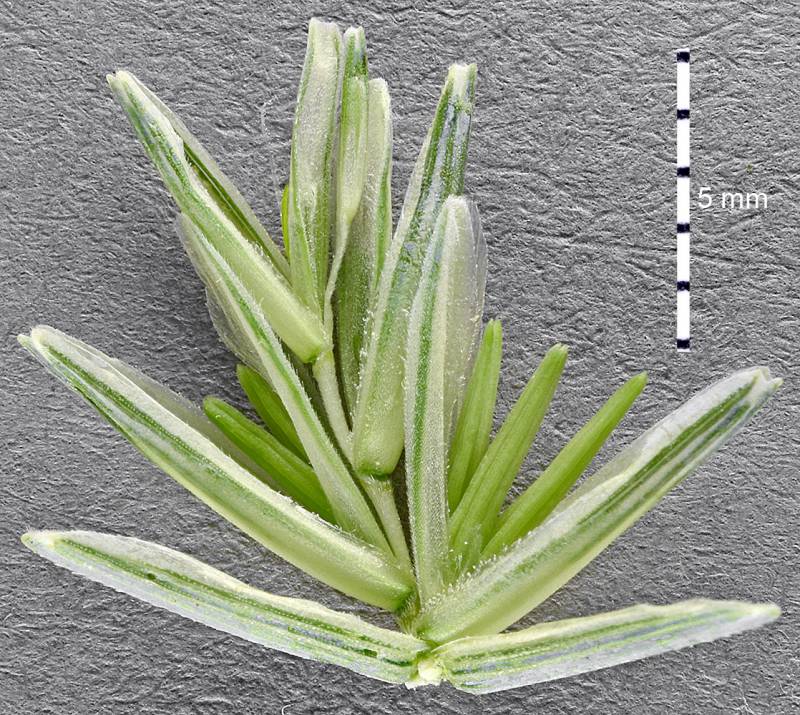Hosted by the University of Washington Herbarium, Burke Museum
Publication: Amer. J. Bot. 72(5): 772. 1985.
Origin: Introduced from Eurasia
Herbarium search: CPNWH
Notes: FNA24: "Thinopyrum intermedium is native to Europe and western Asia. It has been widely introduced in western North America for erosion control, revegetation, forage, and hay. One of its advantages for erosion control and revegetation is that it establishes rapidly in many different habitats. In its native range, it grows in dry areas with sandy or stony soils. In Europe, it forms sterile hybrids with Elymus repens; no such hybrids are known from North America.
Several subspecies have been recognized within Thinopyrum intermedium, usually based on differences in vestiture of the glumes and lemmas, presence or absence of lemma awns, and color of the plants. Assadi (1994) commented that there was little correlation between the different character states. He grew seeds from several wild plants and, even when most of the offspring resembled the parent plant, there was often segregation of other variants. Crossing experiments showed that hybrids between the morphological variants were fertile and usually had regular meiosis. He noted, however, that the plants with glabrous spikelets tended to grow in mesophytic habitats, those with hairy glumes and lemmas on dry slopes, and those with ciliate glumes and lemmas at the edges of fields and in wet places. This difference in habitat preference was reiterated by Ogle (2001). Because of this ecological distinction, they are formally recognized here as subspecies. Plants with hairs only on the outer edges of their lemmas are included under T. intemedium subsp. intermedium. They may be derived from crosses between the hairy and glabrous plants, a possibility that has not been experimentally evaluated. There seems to be little correlation between spikelet vestiture and that of the leaves and stems.
There is no known difference in geographic distribution between subsp. intermedium and subsp. barbulatum. Ogle (2001) states that T. intermedium subsp. intermedium is adapted to areas with 12-13 inches of rainfall per year."
Last updated 1/6/2024 by David Giblin.

